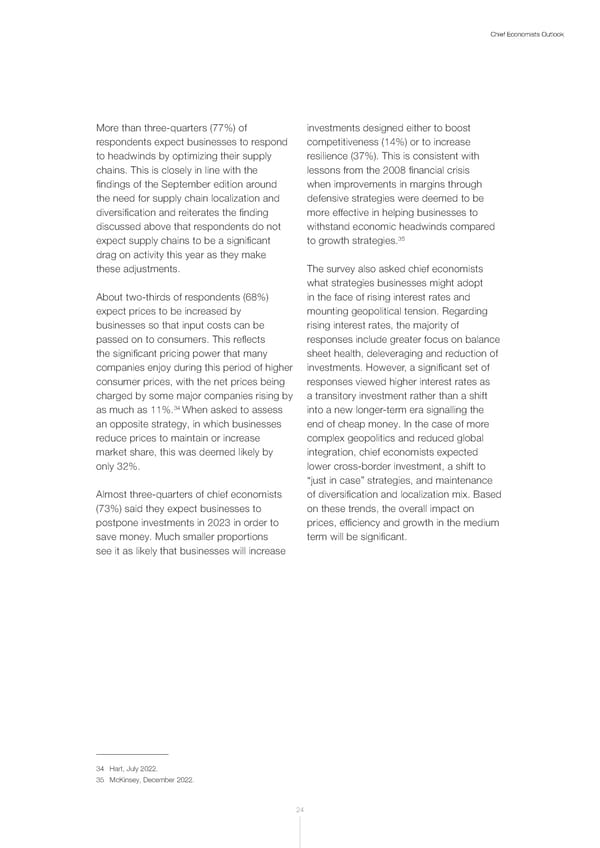24 Chief Economists Outlook More than three-quarters (77%) of respondents expect businesses to respond to headwinds by optimizing their supply chains. This is closely in line with the findings of the September edition around the need for supply chain localization and diversification and reiterates the finding discussed above that respondents do not expect supply chains to be a significant drag on activity this year as they make these adjustments. About two-thirds of respondents (68%) expect prices to be increased by businesses so that input costs can be passed on to consumers. This reflects the significant pricing power that many companies enjoy during this period of higher consumer prices, with the net prices being charged by some major companies rising by as much as 11%. 34 When asked to assess an opposite strategy, in which businesses reduce prices to maintain or increase market share, this was deemed likely by only 32%. Almost three-quarters of chief economists (73%) said they expect businesses to postpone investments in 2023 in order to save money. Much smaller proportions see it as likely that businesses will increase investments designed either to boost competitiveness (14%) or to increase resilience (37%). This is consistent with lessons from the 2008 financial crisis when improvements in margins through defensive strategies were deemed to be more effective in helping businesses to withstand economic headwinds compared to growth strategies. 35 The survey also asked chief economists what strategies businesses might adopt in the face of rising interest rates and mounting geopolitical tension. Regarding rising interest rates, the majority of responses include greater focus on balance sheet health, deleveraging and reduction of investments. However, a significant set of responses viewed higher interest rates as a transitory investment rather than a shift into a new longer-term era signalling the end of cheap money. In the case of more complex geopolitics and reduced global integration, chief economists expected lower cross-border investment, a shift to “just in case” strategies, and maintenance of diversification and localization mix. Based on these trends, the overall impact on prices, efficiency and growth in the medium term will be significant. 34 Hart, July 2022. 35 McKinsey, December 2022.
 WEF Chief Economists Outlook 2023 Page 23 Page 25
WEF Chief Economists Outlook 2023 Page 23 Page 25